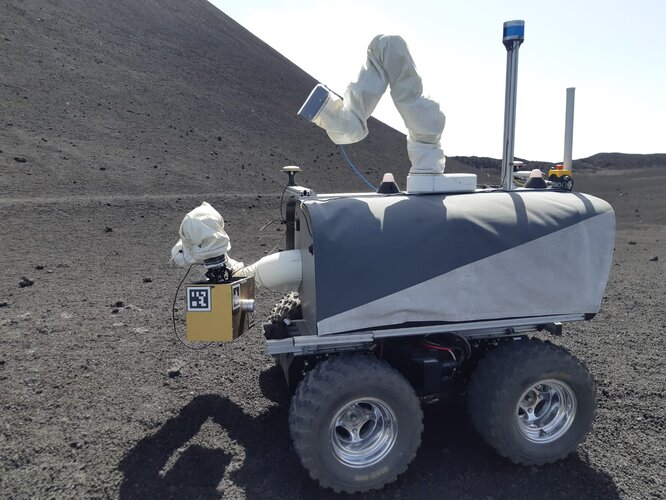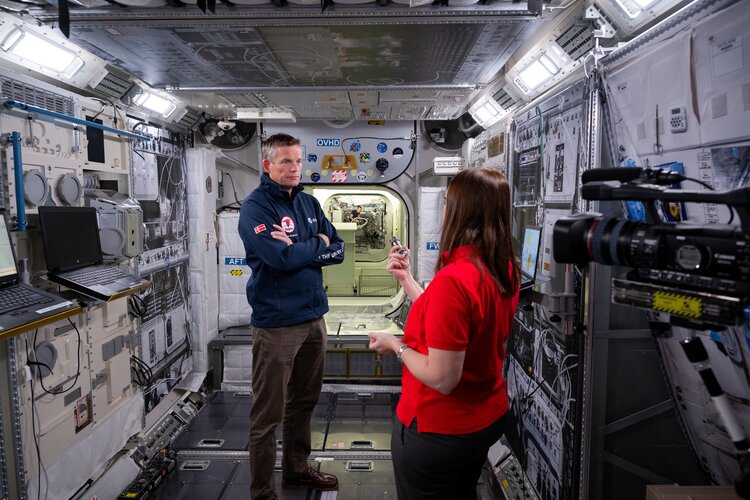A better way to study ocean currents
Monday, 22 May 2023 06:02 To study ocean currents, scientists release GPS-tagged buoys in the ocean and record their velocities to reconstruct the currents that transport them. These buoy data are also used to identify "divergences," which are areas where water rises up from below the surface or sinks beneath it.
By accurately predicting currents and pinpointing divergences, scientists can more precisely forecast t
To study ocean currents, scientists release GPS-tagged buoys in the ocean and record their velocities to reconstruct the currents that transport them. These buoy data are also used to identify "divergences," which are areas where water rises up from below the surface or sinks beneath it.
By accurately predicting currents and pinpointing divergences, scientists can more precisely forecast t Demystifying vortex rings in nuclear fusion, supernovae
Monday, 22 May 2023 06:02 Better understanding the formation of swirling, ring-shaped disturbances - known as vortex rings - could help nuclear fusion researchers compress fuel more efficiently, bringing it closer to becoming a viable energy source.
The model developed by researchers at the University of Michigan could aid in the design of the fuel capsule, minimizing the energy lost while trying to ignite the reac
Better understanding the formation of swirling, ring-shaped disturbances - known as vortex rings - could help nuclear fusion researchers compress fuel more efficiently, bringing it closer to becoming a viable energy source.
The model developed by researchers at the University of Michigan could aid in the design of the fuel capsule, minimizing the energy lost while trying to ignite the reac Wiring up quantum circuits with light
Monday, 22 May 2023 06:02 Quantum computers promise to solve challenging tasks in material science and cryptography that will remain out of reach even for the most powerful conventional supercomputers in the future. Yet, this will likely require millions of high-quality qubits due to the required error correction.
Progress in superconducting processors advances quickly with a current qubit count in the few hundreds
Quantum computers promise to solve challenging tasks in material science and cryptography that will remain out of reach even for the most powerful conventional supercomputers in the future. Yet, this will likely require millions of high-quality qubits due to the required error correction.
Progress in superconducting processors advances quickly with a current qubit count in the few hundreds UH researchers develop sensors that operate at high temperatures and in extreme environments
Monday, 22 May 2023 06:02 Extreme environments in several critical industries - aerospace, energy, transportation and defense - require sensors to measure and monitor numerous factors under harsh conditions to ensure human safety and integrity of mechanical systems.
In the petrochemical industry, for example, pipeline pressures must be monitored at climates ranging from hot desert heat to near arctic cold. Various
Extreme environments in several critical industries - aerospace, energy, transportation and defense - require sensors to measure and monitor numerous factors under harsh conditions to ensure human safety and integrity of mechanical systems.
In the petrochemical industry, for example, pipeline pressures must be monitored at climates ranging from hot desert heat to near arctic cold. Various The next step in operating robots from space
Monday, 22 May 2023 05:58
On his Huginn mission, Andreas Mogensen will take part in the Surface Avatar experiment: A telerobotic experiment where Andreas will operate several robots on Earth at the same time, from inside the Columbus Module on the International Space Station.
The Huginn mission – an overview
Monday, 22 May 2023 05:58
ESA Astronaut Andreas Mogensen will fly to the International Space Station for his second mission called Huginn, in late summer of 2023. It will be a mission of firsts for both Andreas and ESA.
Huginn Science
Monday, 22 May 2023 05:57
ESA astronaut Andreas Mogensen will conduct a variety of science experiments and technology demonstrations during his Huginn mission.
Rocket carrying Saudi man and woman launches to ISS
Sunday, 21 May 2023 21:46 The second-ever private mission to the International Space Station successfully launched on Sunday, carrying the first Saudi citizens, Rayyanah Barnawi, a breast cancer researcher, and Ali Al-Qarni, a fighter pilot, to the orbiting outpost. This marked the maiden voyage of Saudis to space, an event that had been due to take place on the same day.
The SpaceX Falcon 9 rocket roared into the
The second-ever private mission to the International Space Station successfully launched on Sunday, carrying the first Saudi citizens, Rayyanah Barnawi, a breast cancer researcher, and Ali Al-Qarni, a fighter pilot, to the orbiting outpost. This marked the maiden voyage of Saudis to space, an event that had been due to take place on the same day.
The SpaceX Falcon 9 rocket roared into the 'Startup Nation' Israel hopes to ride out storm
Sunday, 21 May 2023 21:46 The global economic slowdown and domestic political turmoil have not impaired the long-term prospects of Israel's vaunted hi-tech industry, officials and insiders say, despite a recent decline in hiring in the sector.
Nearly 18 percent of Israel's gross domestic product comes from the tech sector, which employs 12 percent of the workforce, generates nearly a third of its income tax and const
The global economic slowdown and domestic political turmoil have not impaired the long-term prospects of Israel's vaunted hi-tech industry, officials and insiders say, despite a recent decline in hiring in the sector.
Nearly 18 percent of Israel's gross domestic product comes from the tech sector, which employs 12 percent of the workforce, generates nearly a third of its income tax and const SpaceX launches second Axiom Space private astronaut mission to ISS
Sunday, 21 May 2023 21:02
Axiom Space’s second private astronaut mission is on its way to the International Space Station after a launch May 21.
NASA seeks to shore up congressional support for Artemis
Sunday, 21 May 2023 19:13
As NASA faces both short-term and long-term uncertainty about its funding, the agency is turning to its most powerful advocates: its astronauts.
EarthDaily Analytics offers VENµS imagery access
Sunday, 21 May 2023 18:32
Vancouver-based EarthDaily Analytics is offering access to the French-Israeli Vegetation and Environment monitoring on a New Micro-Satellite (VENµS) mission through Amazon Web Services.
Iceye to supply UAE SAR satellites
Sunday, 21 May 2023 18:25
Iceye plans to develop a five-satellite constellation for Bayanat, a United Arab Emirates geospatial analysis firm, and Emirati fleet operator Yahsat.
Planet seeks partners that can extract more value from data
Sunday, 21 May 2023 18:02
Planet is working with partners to “get value out of our data,” said Kevin Weil, Planet’s president of product and business.
SpaceX launching Saudi astronauts on private flight to space station
Sunday, 21 May 2023 17:56
SpaceX's next private flight to the International Space Station awaited takeoff Sunday, weather and rocket permitting.
The passengers include Saudi Arabia's first astronauts in decades, as well as a Tennessee businessman who started his own sports car racing team. They'll be led by a retired NASA astronaut who now works for the company that arranged the 10-day trip.
It's the second charter flight organized by Houston-based Axiom Space.
